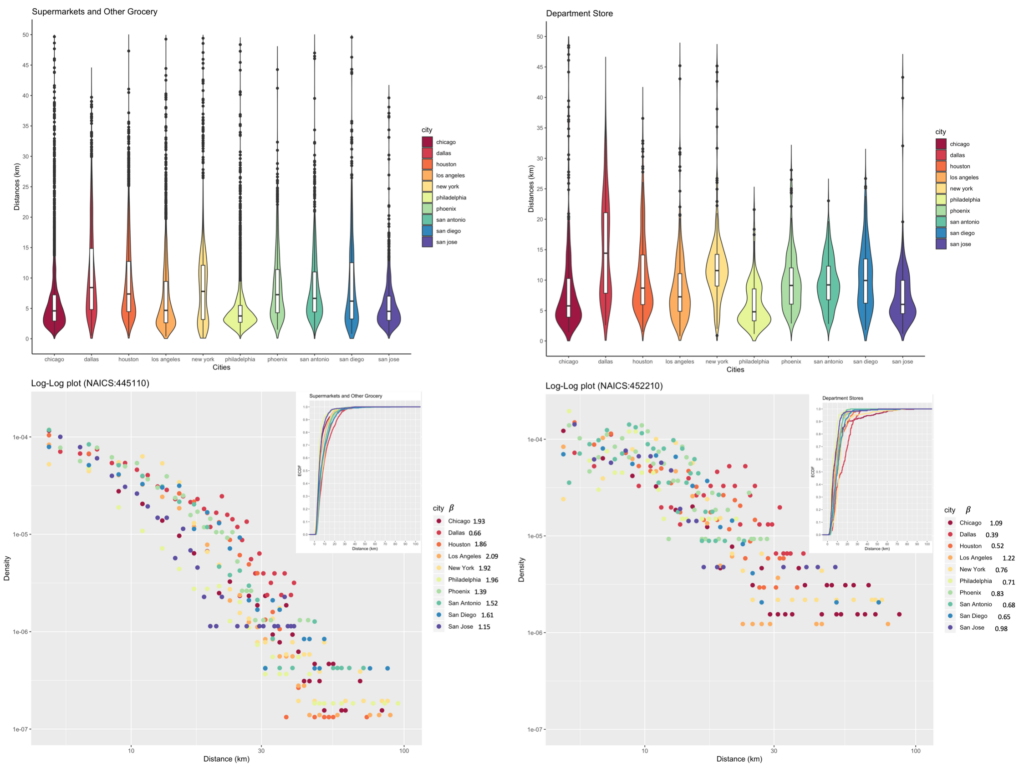Reference: Yunlei Liang, Song Gao, Yuxin Cai, Natasha Z. Foutz, Lei Wu. (2020) Calibrating the dynamic Huff model for business analysis using location big data. Transactions in GIS, 24(3), 681-703.
Abstract: The Huff model has been widely used in location‐based business analysis to delineate a trade area containing a store’s potential customers. Calibrating the Huff model and its extensions requires empirical location visit data. Many studies rely on labor‐intensive surveys. With the increasing availability of mobile devices, users in location‐based platforms share rich multimedia information about their locations at a fine spatio‐temporal resolution, which offers opportunities for business intelligence. In this research, we present a time‐aware dynamic Huff model (T‐Huff) for location‐based market share analysis and calibrate this model using large‐scale store visit patterns based on mobile phone location data across the 10 most populated US cities. By comparing the hourly visit patterns of two types of stores, we demonstrate that the calibrated T‐Huff model is more accurate than the original Huff model in predicting the market share of different types of business (e.g., supermarkets versus department stores) over time. We also identify the regional variability where people in large metropolitan areas with a well‐developed transit system show less sensitivity to long‐distance visits. In addition, several socioeconomic and demographic factors (e.g., median household income) that potentially affect people’s visit decisions are examined and summarized.



